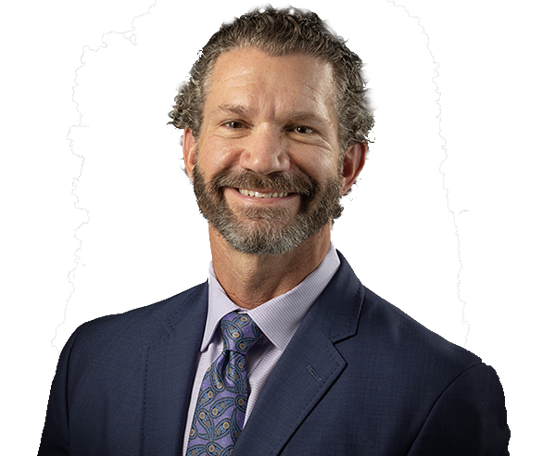Spine
- Anatomy
- Conditions
- Surgical Treatment
Anatomy of the Spine (Lumbar, Cervical and Thoracic)
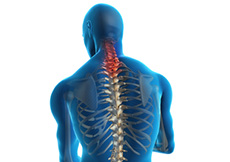
Cervical Spine Anatomy
The spine, also called the back bone, plays a vital role in stability, smooth movement and protection of the delicate spinal cord. It is made up of bony segments called vertebra with fibrous tissue called intervertebral discs between them. The vertebra and discs form the spinal column from the head to the pelvis, giving symmetry and support to the body.
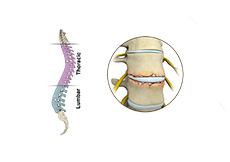
Thoracic Spine Anatomy
Thoracic spine is the central part of the spine, also called as dorsal spine, which runs from the base of the neck to the bottom of your rib cage. The thoracic spine provides flexibility that holds the body upright and protects the organs of the chest.
Spine is made up of 24 spinal bones, called as vertebra, of which, the thoracic region of the spine is made up of 12 vertebrae (T1-T12).
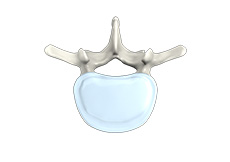
Lumbar Spine Anatomy
The spine, also called the back bone, plays a vital role in stability, smooth movement and protection of the delicate spinal cord. It is made up of bony segments called vertebra with fibrous tissue called intervertebral discs between them. The vertebra and discs form the spinal column from the head to the pelvis, giving symmetry and support to the body.
Cervical
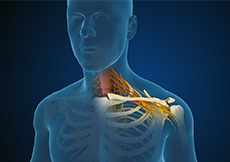
Cervical Radiculopathy & Myelopathy
The spine, also called the back bone, is designed to give us stability, smooth movement, as well as providing a corridor of protection for the delicate spinal cord. It is made up of bony segments called vertebrae and fibrous tissue called intervertebral discs. Disc protrusion, also called herniated disc, is a condition caused by a tear in an intervertebral disc allowing the disc contents to bulge out.

Neck Pain
The first 7 vertebral bones on the spinal column form the cervical spine and are located in the neck region. The neck bears the weight of the head, allows significant amount of movement, and also less protected than other parts of spine. All these factors make the neck more susceptible to injury or other painful disorders. Common neck pain may occur from muscle strain or tension in everyday activities including poor posture, prolonged use of a computer and sleeping in an uncomfortable position.

Back Pain
Back pain or backache is the pain felt in the back that may originate from muscles, nerves, bones, joints or other structures in the spine. Back pain is one of the most common medical problems experienced by most people at some time in their life. Back pain can be acute usually lasting from few days to few weeks, or chronic lasting for more than three months.

Spondylolisthesis
Spondylolisthesis is the displacement of vertebral disc from the spinal column. Outward (forward) displacement is termed as anterolisthesis and inward (backward) displacement is termed as retrolisthesis. This condition is often preceded by spondylolysis, a degenerative condition of the vertebra.

Lordosis
The spine forms natural curves at the neck, torso and lower back, which allows it to absorb shock and hold the weight of the head. When this curvature is accentuated at the lower back, it is a condition called lordosis. Lordosis may develop during childhood as a benign condition, or may develop later in life as a result of poor posture, osteoporosis, obesity, discitis (inflammation of the intervertebral discs) or spondylolisthesis (mal-alignment of the vertebrae).
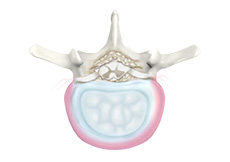
Degenerative Disc Disease (DDD)
Degenerative disc disease (DDD) refers to gradual deterioration of the intervertebral discs between the vertebrae. DDD is a misnomer as it is not actually a disease but a condition that affects the strength, resiliency and structural integrity of the intervertebral discs due to advancing age, trauma, injury, repetitive movement, improper posture, or poor body mechanics. DDD is commonly seen in individuals over 50 years of age. Most of them are usually not aware about their condition until they are examined for some other related health condition.
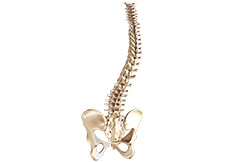
Spine Deformities
The Spine or backbone provides stability to the upper part of our body. It helps to hold the body upright. It consists of series of irregularly shaped bones appearing in a straight line. The spine has two gentle curves, when looked from the side and appears to be straight when viewed from the front. When these curves are exaggerated, pronounced problems can occur such as back pain, breathing difficulties, and fatigue.
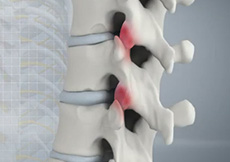
Facet Joint Arthritis
Facet joints, also called zygapophyseal joints are located at the back of the spine which connects the vertebrae together. There are two joints between each pair of vertebrae located on either side of the spine. The facet joints provide stability for the spine.

Sciatica
Sciatica is a painful condition caused by the irritation of the sciatic nerve. The sciatic nerve is the longest nerve in our bodies. It begins in the lower back and extends through the buttocks down the back of each leg to the thighs and feet.

Spondyloarthropathies
Spondyloarthropathies are a group of chronic inflammatory diseases of the spine and joints. The most common spondyloarthropathies include ankylosing spondylitis, reactive arthritis, psoriatic arthritis and arthritis secondary to inflammatory bowel diseases such as ulcerative colitis and Crohn’s disease. Spondyloarthropathies can occur at any age, however, they occur more often in young males. A positive family history increases the risk of spondyloarthropathies.
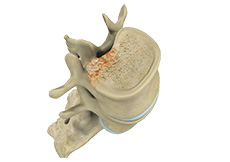
Spinal Tumors
Spine tumor is the abnormal growths of uncontrolled tissues or cells in and around the spinal cord. Tumors can either be cancerous (malignant) or non-cancerous (benign). Some of the commonly occurring benign spinal tumors are osteoma, osteoblastoma, hemangioma, and osteochondroma. Most commonly occurring malignant spinal tumors are chondrosarcoma, Ewing’s sarcoma, lymphoma, osteosarcoma, and multiple myeloma. Tumors that begin in the spine are called as primary spinal tumors. Tumors that spread to the spine from other parts such as the breast, prostate, lung, and other areas are called secondary spinal tumors.
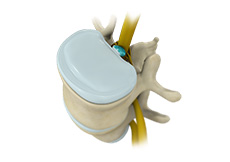
Cauda Equina Syndrome
Cauda equina syndrome is an emergency condition characterized by persistent severe low back pain caused by compression of a bundle of spinal nerves (cauda equina) at the end of the spinal cord (lower back and hip region). If not treated promptly, it can lead to permanent paralysis of the legs, or bowel, bladder and sexual problems.
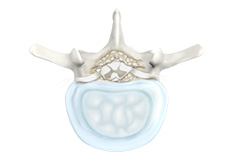
Degenerative Spine
Degenerative spinal conditions are group of disorders that causes loss of normal structure and function of the spine. These disorders may be caused due to aging, infection, tumors, muscle strains or arthritis. Degenerative joint disease is commonly known as arthritis that affects feet, fingers, hands, spine and weight-bearing joints. It is caused due to the inflammation of joints because the articular cartilage covering the bones may be damaged or worn out.
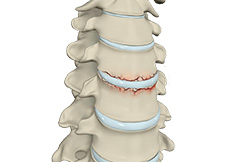
Cervical Fracture
The neck is made up of seven tiny bones called cervical vertebrae (C1-C7). These are protected by spongy vertebral disks present between them and supported by ligaments that hold them together and surround the underlying spinal cord. Cervical fractures are common in motor vehicle accidents, sports activities and falls. The second, sixth and seventh cervical vertebrae are frequently involved in fractures, and may also injure the spinal cord.
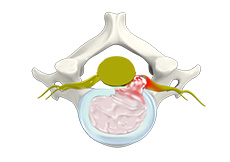
Herniated Disc (Cervical)
Herniation of a disc is an anomalous spine condition characterized by leakage of the inner contents of the intervertebral disc, due to cracks in its outer wall. Herniated disc is commonly seen in the cervical or neck region, a condition called cervical herniated disc (CHD). CHD is followed by arm or neck pain that may arise due to compression of the spinal nerves by the protruding disc material. This condition is frequently reported in people between 30-40 years of age as well as elderly people.
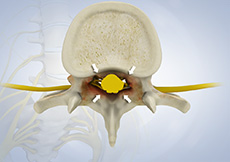
Spinal Stenosis - Cervical
Cervical spine refers to neck portion of spine, and cervical spine conditions may result from overuse injuries, trauma and certain diseases. Cervical stenosis refers to narrowing of the spinal canal that protects the spinal cord and its branching nerves. The condition causes neck pain radiating to arms and hands, numbness or weakness in the legs. This condition causes cervical myelopathy and cervical radiculopathy.
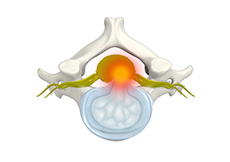
Cervical Disc Protrusion
Cervical disc protrusion, commonly known as disc bulge occurs when the spinal discs and associated ligaments are intact, but may form an outpouching that will press on the spinal nerves. This condition causes pain in the neck, shoulder and the arms. Usually, the symptoms include a dull, aching, or sharp pain in the neck or the shoulder blades. Sometimes, the pain may radiate along the arms to the hands and fingers.

Cervical Degenerative Disorder
Cervical degenerative disc disease (DDD) is a misnomer as it is not a disease as such but a condition that affects the strength, resiliency and structural integrity of the intervertebral discs due to increasing age, trauma, injury, repetitive movement, improper posture, or poor body mechanics. Cervical DDD is commonly seen in adults after 50 years of age and most of them are usually not aware about their condition until they are examined for some other health condition.

What’s New in Cervical Herniated Disc
Herniation of a disc is an anomalous spine condition characterized by leakage of the inner contents of the intervertebral disc, due to cracks in its outer wall. Herniated disc is commonly seen in the cervical or neck region, a condition called cervical herniated disc (CHD). CHD is followed by arm or neck pain that may arise due to compression of the spinal nerves by the protruding disc material.
Thoracic
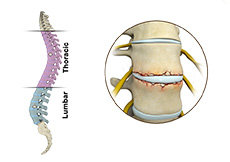
Fracture of the Thoracic Spine
Fracture of the Thoracic and Lumbar Spine
The backbone is made of small bones arranged from the neck region down to the buttocks, one above the other. The region at the chest and lower back are called the thoracic and lumbar spine, respectively. These are the two regions commonly affected by a fracture and frequently occur due to high-velocity accidents, falls from a height or a violent blow. They may also occur in cases of osteoporosis or a tumor where the bone is weakened.
Lumbar
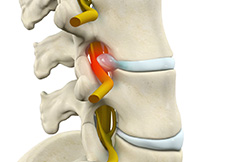
Lumbar Radiculopathy
Back pain is a common condition affecting approximately 80% of the population at some point in their lives. The area usually affected is the lower back (lumbar region) as it bears most of the upper body’s weight. Pain in the lower back may sometimes radiate to the legs. This is referred to as lumbar radiculopathy or sciatica. Lumbar radiculopathy can be extremely debilitating and interfere with your daily activities.

Low Back Pain
Low back pain can be disabling; however, most cases heal with time (2-12 weeks) and with conservative therapy. Surgery is suggested when symptoms persist and begin to affect daily activities. Low back surgery may be indicated for treating various underlying causes of back pain such as spinal fractures, degenerative disc disease, nerve compression, stenosis (narrowing of the spinal canal), tumors, infection, instability or bowel and bladder difficulties.

Fracture of the Lumbar Spine
The backbone is made of small bones arranged from the neck region down to the buttocks, one above the other. The region at the chest and lower back are called the thoracic and lumbar spine, respectively. These are the two regions commonly affected by a fracture and frequently occur due to high-velocity accidents, falls from a height or a violent blow. They may also occur in cases of osteoporosis or a tumor where the bone is weakened.
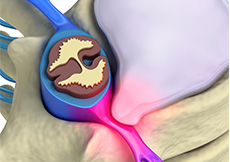
Herniated Disc (Lumbar)
Herniated disc is a condition in which the outer fibers (annulus) of the intervertebral disc are damaged causing the soft inner material of the nucleus pulposus to rupture out of its space. A herniated disc, common in the lower back (lumbar spine) occurs when there is a tear in the outer lining of the disc (annulus fibrosus). This causes the inner jelly-like material (nucleus pulposus) to leak out and place pressure on the adjacent spinal nerve root.
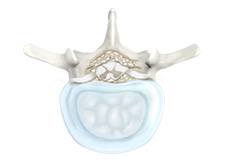
Spinal Stenosis - Lumbar
Lumbar stenosis is the compression of spinal nerves caused by narrowing of spinal canal and it is one of the common causes of low back pain. Spinal stenosis can also affect the spine in neck region. The symptoms include back pain, burning or aching type of pain in buttocks that radiates to the legs (sciatica), weakness in the legs or "foot drop”. One of the causes for spinal stenosis is the ageing and other causes include Paget’s disease, achondroplasia, spinal tumors and spinal injuries.

Lumbar Degenerative Disc Disease
Lumbar degenerative disc disease (DDD) is a common cause of low back pain. The vertebrae are cushioned by intervertebral discs which act as shock absorbers, for the spine. Over time, these natural shock absorbers wear out and degenerate due to aging, trauma or injury leading to DDD. Degenerative disc disease is not actually a disease but refers to the changes in the spine that occur as a part of the normal aging process.
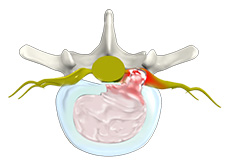
Lumbar Disc Herniation
Lumbar disc herniation is the most common cause of low back pain and leg pain (sciatica). The lumbar intervertebral discs are flat and round, present between the lumbar vertebrae and act as shock absorbers when you walk or run. There is a soft, gelatinous material in the center (nucleus pulposus) which is encased in strong elastic tissue forming a ring around it called annulus fibrosus.
General
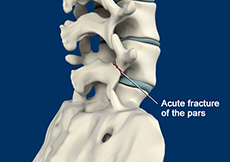
Spondylolysis
Spondylolysis is a stress fracture of vertebra that may progress into spondylolisthesis, a condition of displacement of vertebrae from the spinal column. Spondylolysis is the cause for frequent low back pain in children. It is more common among children and teenagers who participate actively in sports such as football, weightlifting and gymnastics.

Kyphosis
Kyphosis is a condition of abnormal curvature of the spine that causes rounding of the upper back or a hunchback. The thoracic portion of the spine normally has a “C”-shaped curve, but excessive forward curve in the spine leads to kyphosis. In adults, kyphosis may develop as a result of degenerative diseases such as arthritis, disc degeneration, osteoporotic fractures, traumatic injuries and slippage of vertebral disc. Kyphosis most commonly affects the thoracic spine, but can involve the cervical and lumbar portions too.
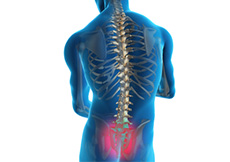
Sacroiliac Joint Dysfunction
The sacroiliac joint is one of the large joints in the body and is formed by the connection of the sacrum and the right and left iliac (pelvic) bones. The sacroiliac joints have small amount of movement and transmits all the forces of the upper body to the lower body. The sacrum is the triangular-shaped bone at the bottom of the spine, below the lumbar spine. The sacroiliac joint acts as a shock-absorbing structure.
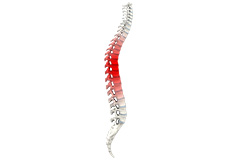
Spine Trauma
Spine trauma is damage to the spine caused from a sudden traumatic injury caused by an accidental fall or any other physical injury. Spinal injuries may occur while playing, performing normal activities, operating heavy machines, lifting heavy objects, driving automobiles, or when you suffer a fall. Injury to spine may cause various conditions including fractures, dislocation, partial misalignment (subluxation), disc compression (herniated disc), hematoma (accumulation of blood) and partial or complete tears of ligaments.
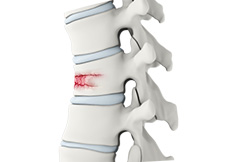
Vertebral Compression Fractures
Back pain is an indication of stress fractures known as vertebral compression fractures. Vertebral compression fractures occur when the normal vertebral body of the spine is squeezed or compressed to a smaller height. The bone collapses when too much pressure is placed on the vertebrae, resulting in pain, limited mobility, height loss, and spinal deformity. In very severe compression fractures the back of the vertebral body is pushed into the spinal canal and pressure is placed on the spinal cord.
Cervical
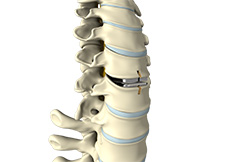
Artificial Cervical Disc Replacement
Artificial cervical disc replacement is a spine surgery to replace a degenerated (deteriorated) disc in the neck with an artificial disc. Disc degeneration reduces the height of the disc and may cause a herniated disc. Herniated disc refers to a condition in which the inner central portion (nucleus pulposus) of the spinal disc is forced out through a tear in the outer, fibrous ring (annulus fibrosus) of an intervertebral disc. Herniated disc is also called bulging disc, ruptured disc or slipped disc.
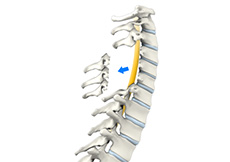
Cervical Laminectomy
A cervical laminectomy is an operative procedure of removing the bone at the neck (cervical spine) region to relieve pressure on the spinal nerves. It can also be performed to relieve the symptoms of narrowed spinal canal known as spinal stenosis.

Cervical Foraminotomy
Cervical foraminotomy is an operative procedure to relieve the symptoms of pinched or compressed spinal nerve by enlarging the neural foramen, an opening for the nerve roots to exit from the spine and travel throughout the body. The neural foramen forms a protective passageway for nerves that transmit signals among the spinal cord and the rest of the body parts.

Posterior Cervical Fusion
Posterior cervical fusion (PCF), a surgical procedure performed through the back of the neck, involves joining or fusing two or more damaged cervical vertebrae. The fusion of vertebrae is also known as arthrodesis. Sometimes metallic plates may be used for fixing the vertebrae, this is also known as instrumentation.
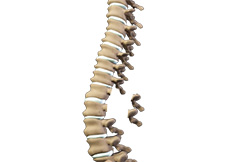
Posterior Cervical Laminectomy and Fusion
Posterior cervical laminectomy and fusion is a surgical procedure performed to decompress the spinal cord and nerve roots in the cervical region of the spine. Some of the spinal conditions that may compress the spinal cord and nerve roots include disc degeneration, bulging or herniated disc, spinal stenosis, and spondylosis. Nerve compression may result in neck pain and /or arm pain. The “lamina” is a bony plate or layer that covers and protects the spinal cord, and “ectomy” means to remove.

Posterior Cervical Laminectomy
Various spinal conditions, namely, degenerative disc disease, herniated disc, spinal stenosis and spondylosis can cause compression of the spinal cord and spinal nerves in the neck (cervical region) resulting in neck and arm pain. These conditions may also lead to numbness and weakness in the arms. This pain and other associated symptoms can be relieved by removing the lamina, the bony plate forming the roof of the spinal canal, by a surgical procedure called laminectomy.

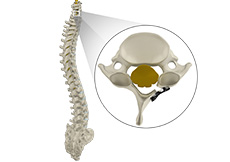
Cervical Laminoplasty
A cervical laminoplasty is an operative procedure that involves reshaping/repositioning the bone at the neck region (cervical spine) to relieve excess pressure on the spinal nerves. It can also be performed to relieve the symptoms of narrowed spinal canal known as spinal stenosis.
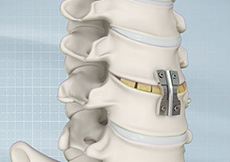
Cervical Spine Fusion
Your spine consists of a spinal cord supported by a series of interlocking bones called vertebrae. The cervical spine is the upper part of the spine situated in the neck region. It has seven vertebrae, separated and cushioned by spongy intervertebral discs. The vertebrae and discs may get damaged by injury, disease or wear-and-tear, compromising the cervical spine.
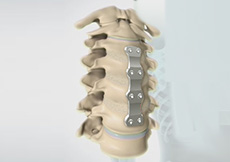
Cervical Corpectomy and Strut Graft
The cervical spine comprises the first 7 vertebrae of the spinal column. The vertebrae are separated from one another by shock absorbing pads called intervertebral discs. Over time, the discs can become worn out resulting in neck pain. Most patients with neck pain can be managed conservatively. However, surgery needs to be considered when the degenerative changes of the cervical spine exert excessive pressure on the spinal cord.
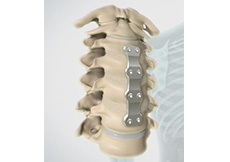

Minimally Invasive Cervical Discectomy and Fusion
A cervical discectomy is an operative procedure which relieves pressure on the spinal nerves and/or spinal cord by removing the total or a part of the damaged intervertebral disc. Cervical discectomy is performed using minimally invasive approach in selected patients, if appropriate.
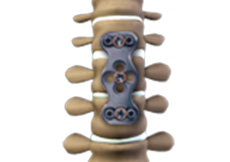
Anterior Cervical Discectomy and Fusion
Anterior cervical discectomy with fusion is an operative procedure to relieve compression or pressure on nerve roots and/or the spinal cord due to a herniated disc or bone spur in the neck.
In anterior cervical discectomy with fusion, the surgeon approaches the cervical spine through a small incision in the front of the neck and removes the total disc or a part of the disc along with any bony material that is compressing or putting pressure on the nerves and producing pain.

Anterior Cervical Discectomy
Anterior cervical discectomy is an operative procedure to relieve pressure or compression on the nerve roots and/or the spinal cord because of a herniated disc (damaged disc) or a bone spur.
Pain in the neck and extremities is a common symptom of intervertebral disc damage or herniation.
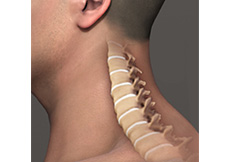

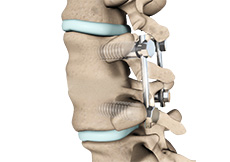
Minimally Invasive Posterior Fusion
Posterior cervical fusion (PCF), a surgical procedure performed through the back of the neck, involves joining or fusing two or more damaged cervical vertebrae. The fusion of vertebrae is also known as arthrodesis. Sometimes metallic plates may be used for fixing the vertebrae, this is also known as instrumentation.
Thoracic

Thoracic Spine Decompression
Thoracic spine decompression is a procedure to relieve pressure on the spinal nerves in the middle portion of the back. Spine decompression surgery is indicated in treating spinal stenosis. Spinal stenosis is the narrowing of the spinal canal caused by degeneration of the facet joints and the thickening of the ligaments. These thickened ligaments narrow the spinal canal and compress the nerves causing chronic pain, numbness and tingling sensation or weakness in your arms or legs.

Thoracic Corpectomy
Thoracic corpectomy is a procedure performed to relieve pressure on a nerve at the thoracic region (upper and middle back) by removing the source of the compression. It is indicated for conditions such as degenerative disc disease, spinal stenosis, bone spurs, tumor, fracture and infection leading to spinal compression, which cause pain, weakness and numbness in various parts of the body.
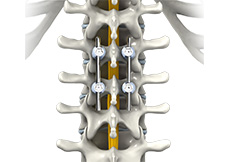
Thoracic Spinal Fusion
Thoracic spine fusion is a surgical procedure in which two or more bones (vertebrae) of the thoracic spine are joined together so as to eliminate the movement between them. The thoracic spine is the center part of the spine and is formed of 12 vertebrae. Thoracic spine fusion is done by placing bone grafts or bone graft substitutes in between the affected vertebrae. This promotes bone growth and eventually fuses the vertebrae into a single, solid bone.
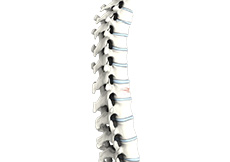
Thoracic Vertebroplasty
Osteoporosis is a “silent” disease characterized by weakening of bones, making them more susceptible to fractures, typically in the hip and spine. Elderly people and especially post-menopausal women are at greater risk of developing osteoporosis.

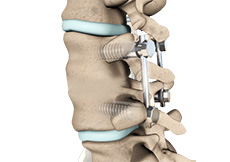
Lumbar
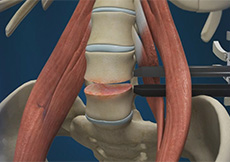
Lumbar Discectomy
The lower back or lumbar region is often the site of pain due to its high mobility and weight bearing. Spongy discs present between the vertebral bones of the spine help cushion the spine during stress and movement. These intervertebral discs in the lumbar region may undergo damage due to stress, causing them to herniate or rupture, and compress adjacent spinal nerves. This can lead to lower back pain, as well as pain, weakness and numbness in the lower legs. A lumbar discectomy is a surgical procedure to treat a herniated or ruptured disc, and relieve pressure on the spinal nerves.
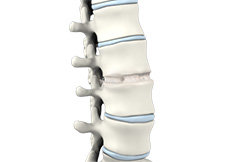
Anterior Lumbar Interbody Fusion
Anterior lumbar interbody fusion (ALIF) is a surgery performed to correct the spinal problems in the lower back. The surgery can be implemented either as an open surgery or minimally invasive technique.
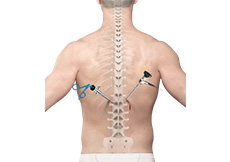
Minimally Invasive TLIF
Our spine is made up of small bony segments called vertebrae. These vertebrae are categorized into cervical or neck vertebrae, thoracic (upper back) and lumbar (lower back). Cushioning discs present between each vertebrae act as shock absorbers. A cylindrical bundle of nerve fibers called the spinal cord passes through the entire vertebral column and branches out to the various parts of our body.
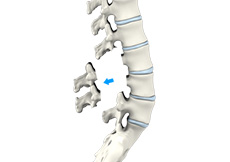
Lumbar Laminectomy (Minimally-Invasive)
Lumbar laminectomy, also known as decompression laminectomy, is a spinal surgery done to relieve excess pressure on the spinal nerve(s) in the lumbar (lower back) region.
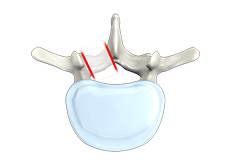
Lumbar Foraminotomy, Facetectomy
The vertebrae (spinal bones) have openings known as neuroforamen on either side for the passage of spinal nerves. The neuroforamen are surrounded by tiny joints known as facet joints, present in pairs at the back of each vertebra, which connect and stabilize them together. Bone spurs herniated intervertebral disc material, and thickened ligaments can obstruct the neuroforamen causing compression of the nerves and resulting in pain in the arms and legs.
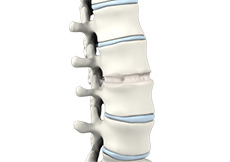
Lumbar Interbody Fusion
Lumbar Interbody Fusion (LIF) surgery is a surgical technique involving the removal of the damaged intervertebral disc, and the insertion of a bone graft into the disc space created between the two adjoining vertebrae. Bone grafts promotes healing and facilitate the fusion. Screws and rods are used to stabilize the spine during the healing process.
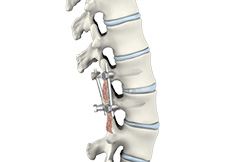
Lumbar Fusion
Spinal fusion, also called arthrodesis, is a surgical technique used to join two or more vertebrae (bones) within the spine. Lumbar fusion technique is the procedure of fusing the vertebrae in lumbar portion of the spine (lower back).
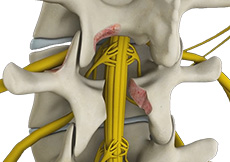
Lumbar Decompression
The spinal cord is protected by a bony column of vertebral bones, arranged one above the other. Injury or wear-and-tear can cause parts of the vertebrae to compress the nerves of the spinal cord, leading to pain, numbness or tingling in the part of the body that the nerve supplies. Lumbar decompression is a surgical procedure performed to relieve pressure over the compressed nerves in the lower spine (lumbar region).

Posterolateral Lumbar Fusion
Posterolateral lumbar fusion is a surgical technique that involves correction of spinal problems from the back of the spine by placing bone graft between segments in the back and leaving the disc space intact.

Lower Back (Lumbar) Surgery
Low back pain is one of the most common health problems experienced by a majority of individuals, at different phases of their lives.
Most patients with low back pain do not require surgery for the management of their condition. However, surgery may be beneficial in patients with persistent pain, spinal instability, weakness or numbness in legs or feet, and impaired bowel or bladder function.
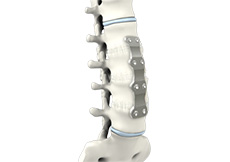
Anterior Lumbar Corpectomy and Fusion
Anterior Lumbar Corpectomy and Fusion is a surgical technique performed to remove the vertebral bone or disc material between the vertebrae to alleviate pressure on the spinal cord and spinal nerves (decompression) in the lumbar (lower back) region.
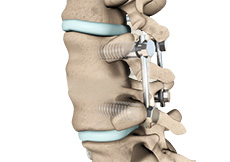
Posterior Fusion for Trauma
Spinal fusion is a surgical technique used to join together two or more vertebrae in the spine and to minimize the pain caused by movement of these vertebrae. Fusion of vertebrae in lumbar portion of the spine is called as lumbar fusion and the surgery can be done as an open or minimally invasive procedure.
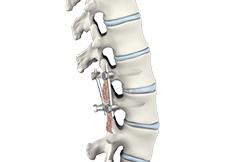
Transforaminal Lumbar Interbody Fusion
Transforaminal lumbar interbody fusion (TLIF) is a type of spinal fusion procedure in which bone graft is placed between the affected vertebrae in the lower back (lumbar) region through an incision on the patient’s back.

Posterior Lumbar Fusion
Spinal fusion, also called arthrodesis, is a surgical technique used to join two or more vertebrae (bones) within the spine. Lumbar fusion technique is the procedure of fusing the vertebrae in lumbar portion of the spine (lower back).
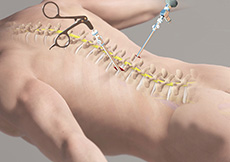
Minimally Invasive Lumbar Surgery
Minimally invasive lumbar surgery is an alternative to open lumbar surgery that allows the surgeon to access the spine through smaller incisions. Special techniques and instruments, used in this approach, minimize muscle and soft tissue damage and also offer several advantages over the traditional open approach which include smaller scars, less blood loss, lower postoperative pain, faster recovery and shorter hospital stay.
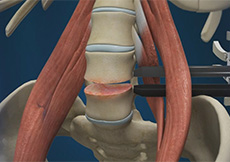
Minimally Invasive Lumbar Discectomy
Lumbar discectomy is a spinal surgery that involves removal of damaged intervertebral disc to relieve pressure on the spinal nerves (decompression) in the lumbar (lower back) region. Minimally invasive technique is implemented to perform the surgery.

Lumbar Corpectomy and Fusion
Anterior Lumbar Corpectomy and Fusion is a surgical technique performed to remove the vertebral bone or disc material between the vertebrae to alleviate pressure on the spinal cord and spinal nerves (decompression) in the lumbar (lower back) region.
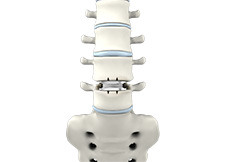


Lateral interbody fusion
The back is made up of a number of small bones called vertebrae. Cushioning discs present between the vertebrae act as shock absorbers. The vertebral column allows the cylindrical bundle of nerve fibers called the spinal cord to pass through the entire column length and branch out to the various parts of the body. Any damage or deformity to the bones of the vertebral column or to the intervertebral discs can damage these nerves, leading to pain in the body part that the nerve supplies.
General
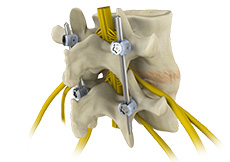
Spinal Fusion
Spinal fusion is the surgical technique of combining two or more vertebrae. Fusion of the vertebrae involves insertion of secondary bone tissue obtained either through auto graft (tissues from the same patient) or allograft (tissues from the other person) to augment the bone healing process.

Minimally Invasive Spine Surgery
MISS is the latest advanced technology available to perform spinal surgeries through small, less than one inch long, incisions. It involves the use of special surgical instruments, devices and advanced imaging techniques to visualize and perform the surgery through such small incisions. MISS is aimed at minimizing damage to the muscles and surrounding structures.

Spinal Decompression
Spinal decompression is treatment to relieve pressure on one or many “pinched nerves” of the spinal column. It can be achieved either surgically or by non-surgical methods. It is used to treat conditions which cause chronic backache such as herniated disc, disc bulge, sciatica, and spinal stenosis.
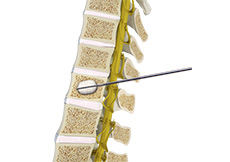
Kyphoplasty
Balloon kyphoplasty is a spine surgery that relieves back pain caused by a vertebral compression fracture. Osteoporosis (bone disease) is the primary cause of vertebral compression fractures. Other causes include trauma such as a fall or motor vehicle accident, and some types of cancers affecting the spinal vertebrae. The aim of balloon kyphoplasty is to relieve pain, stabilize the fracture and restore the vertebral body height.

Robotic Spine Surgery
Robotic Assisted Spine Surgery is a minimally invasive spine surgery where the surgeon is assisted by a robotic system (Da Vinci surgical system) to perform the surgery. Robotic systems are becoming increasingly popular in the medical fraternity owing to the unique advantages including the precision, safety and many other advantages. The da Vinci® robotic surgical system is one of the popular and widely employed robotic systems in the specialty of medicine and is used to perform various surgical procedures.
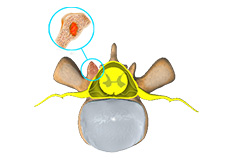
Spine Tumor Surgery
Spine tumor is the abnormal growths of uncontrolled tissues or cells in and around the spinal cord. Tumors can either be cancerous (malignant) or non-cancerous (benign). Some of the commonly occurring benign spinal tumors are osteoma, osteoblastoma, hemangioma, and osteochondroma. Most commonly occurring malignant spinal tumors are chondrosarcoma, Ewing’s sarcoma, lymphoma, osteosarcoma, and multiple myeloma.

Spinal Cord Stimulator
Back and leg pain often have causes which either improve on their own or which the surgeon can correct. Sometimes there is no easily correctable cause of the pain.
Among other things, scar tissue around the nerves or chronic inflammation of the nerves such as arachnoiditis may cause leg and back pain.

Minimally-Invasive SI Joint Fusion
Sacroiliac joint fusion is performed to stabilize a dysfunctional joint in the pelvic region. The procedure helps alleviate pain when conservative methods fail to provide relief.
Others

Possible Complications of Spinal Surgery
The most serious complication of a herniated disc that may occur before surgery is the development of the cauda equine syndrome. It occurs when a large particle of disc material is ruptured into the spinal canal. It occurs in the area where the nerves that control the bowels and bladder travel before they leave the spine. This causes pressure on these nerves resulting in permanent damage. Bowel and bladder controlling ability is lost.

Post-op Instructions
Your surgeon may recommend a few specific post-operative instructions following spinal surgery. You should follow the instructions of the surgeon to aid in faster recovery with optimum results. The duration of hospitalization depends on the treatment rendered. The period of your rest or inactivity depends on a few factors such as the type of surgical procedure and the approach used to access your spine, the size of the incision and presence of any complications.

